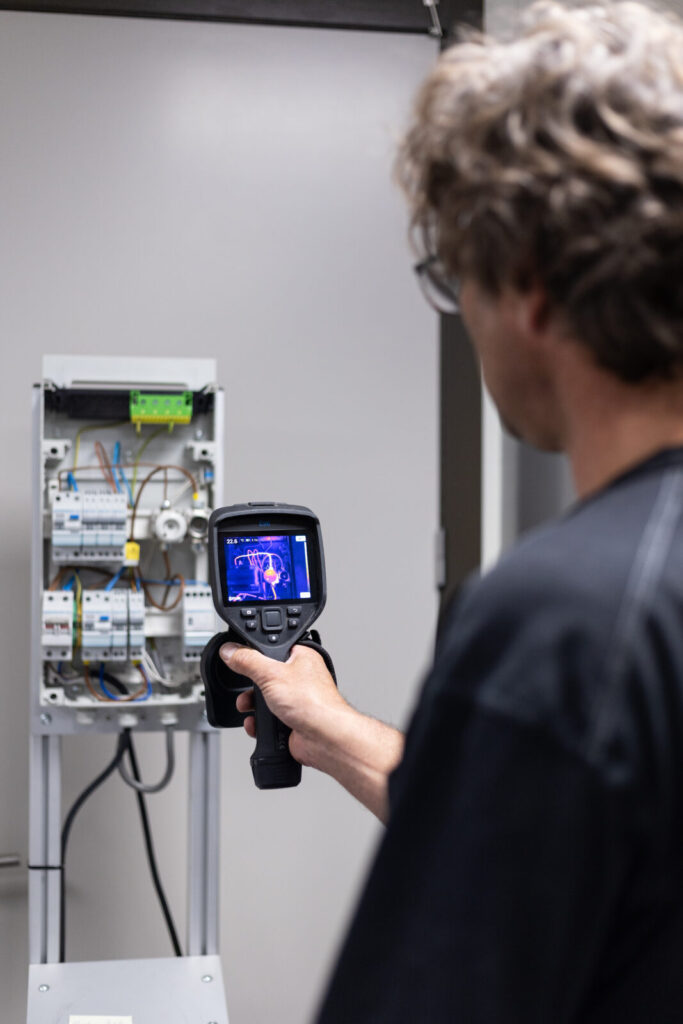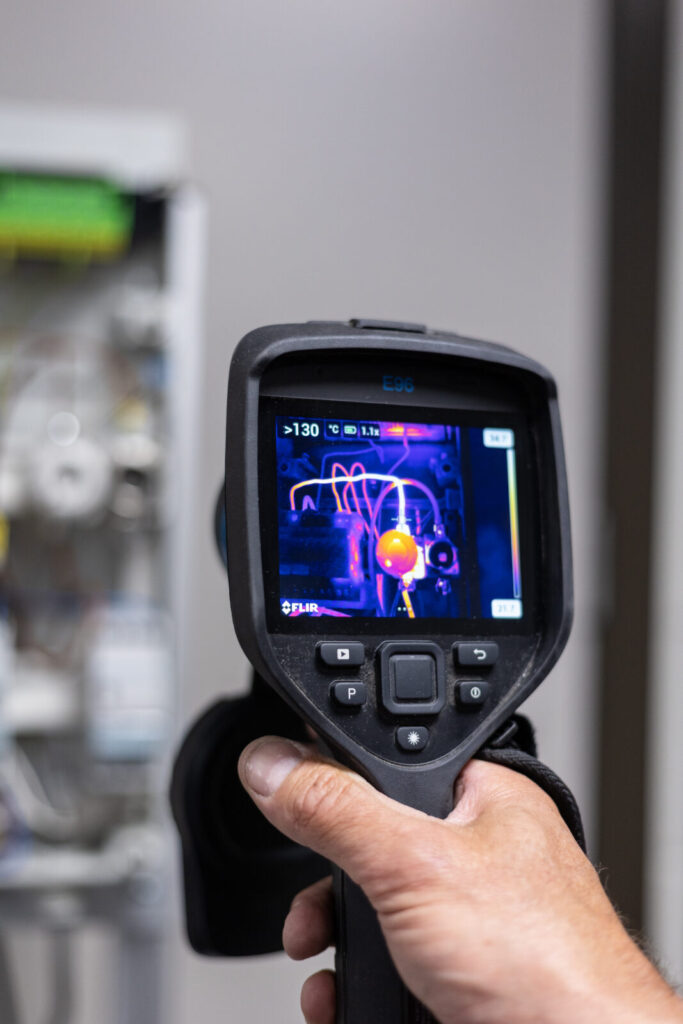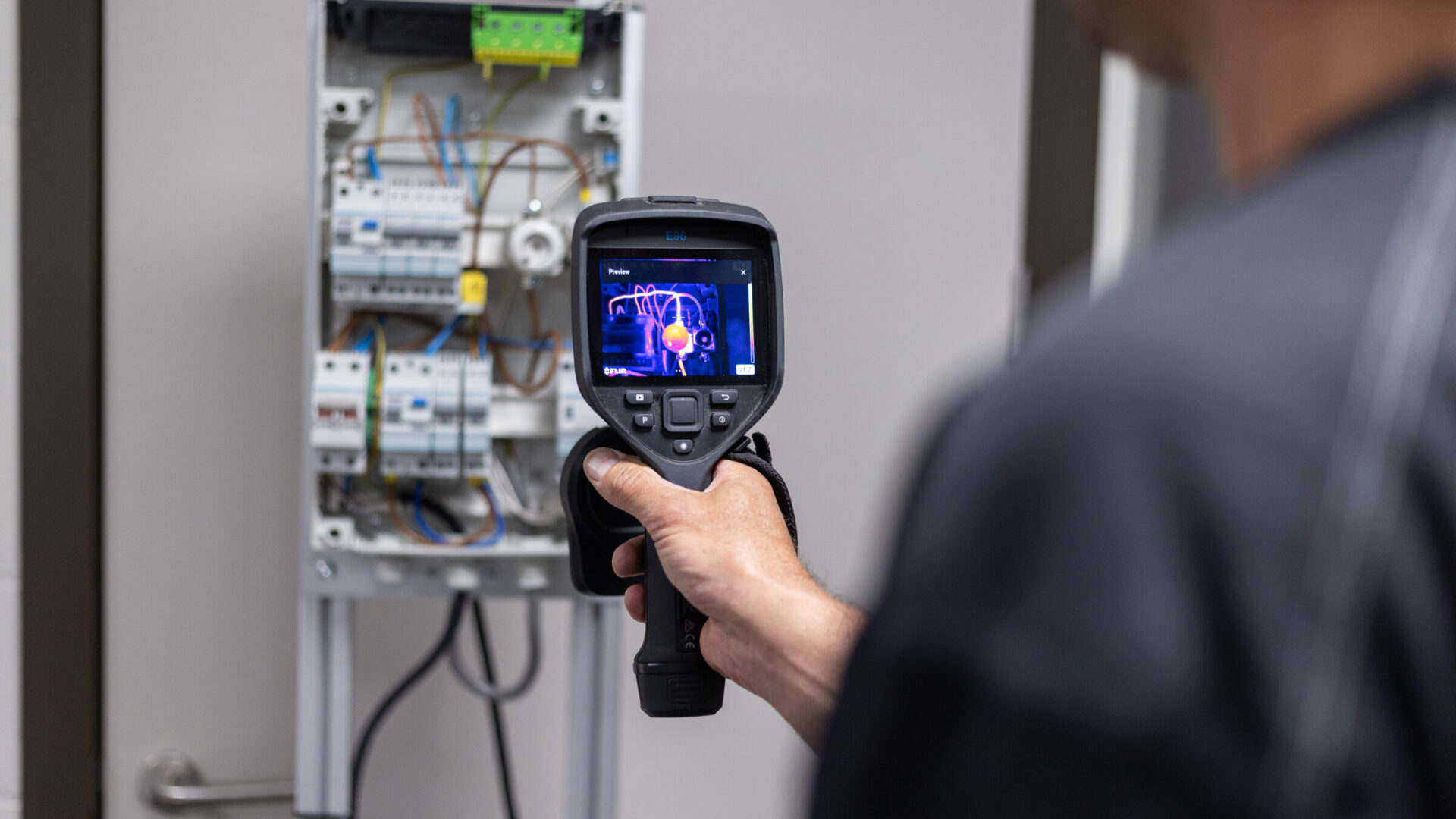
What is a thermographic inspection?
During a thermographic inspection, or thermography, infrared cameras are used to capture thermal images. Every electrical component, such as switches, cables, and connections, emits heat during operation. When there is overloading, poor connections, or wear, abnormal temperature patterns occur. These are immediately visible in a thermographic image and form the basis for a thorough analysis.
The main advantage of this technique is that the installation can remain operational during the inspection. As a result, you will not experience downtime and will obtain a reliable picture of the current situation.
How does a thermographic inspection work?
The infrared camera converts the measured electromagnetic radiation into an electrical signal, which is then presented on the camera’s screen as a so-called thermogram.
The temperature measured by the IR camera largely depends on the emissivity factor of the materials being measured. Emissivity is the ratio between the actual temperature of an object and the temperature as measured by the infrared detector. When the emissivity is low, the measured temperature will be lower than the actual temperature. It is therefore important to know and apply the correct emissivity of the materials when measuring absolute temperatures. Determining emissivity, however, is not always possible or necessary.
Thermographic inspections often focus not on absolute temperatures but on recording relative temperatures. This is because in case of (future) defects, the measured temperature is not always too high but rather abnormal compared to expected patterns. Relative temperatures thus provide much more insight into hidden faults and defects than actual temperatures. The temperatures are compared to similar situations, such as:

- Equally loaded three-phase connections and components
- Busbar connections with multiple bolts and nuts
- Bearings of rotating equipment
- Level measurements in tanks
- Level measurements of “sludge” (sediment) in tanks
- Blockages in pipelines
- Defects in insulation material
Technotron’s Approach
Technotron applies thermography in various sectors, including:
- Industry: production environments where downtime causes high costs.
- Utilities: office buildings, hospitals, and schools where safety is the priority.
- Energy and maritime: installations with high loads and complex networks.
In all these environments, a thermographic inspection provides a reliable method to detect risks in time.
Our approach is fully focused on quality and reliability:
- Preparation – Inventory of the electrical installation and determination of the inspection points.
- Inspection – Performing thermographic measurements with advanced equipment.
- Analysis – Assessment of the results by experienced specialists.
- Reporting – A clear report with conclusions and recommendations for maintenance or replacement.
Thanks to our many years of experience and up-to-date expertise, you can rely on an inspection that meets the highest standards.
Contact us
A thermographic inspection is the way to detect hidden defects in your electrical installation at an early stage. By using thermography, you can prevent malfunctions, reduce costs, and improve safety within your organization. Would you like to know more or schedule a thermographic inspection for your electrical installation right away?
Request your inspection now
✔ Response within 1 business day
✔ Non-binding and personal advice
✔ 100% compliant with current laws and regulations

